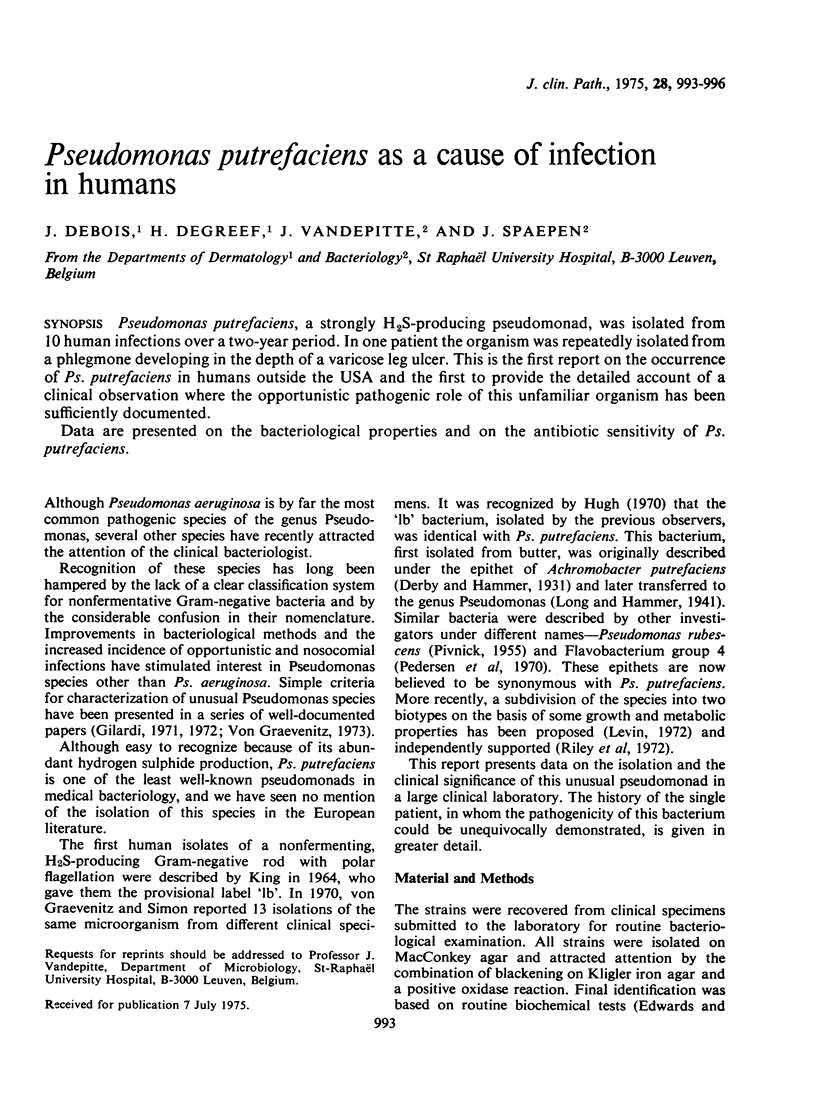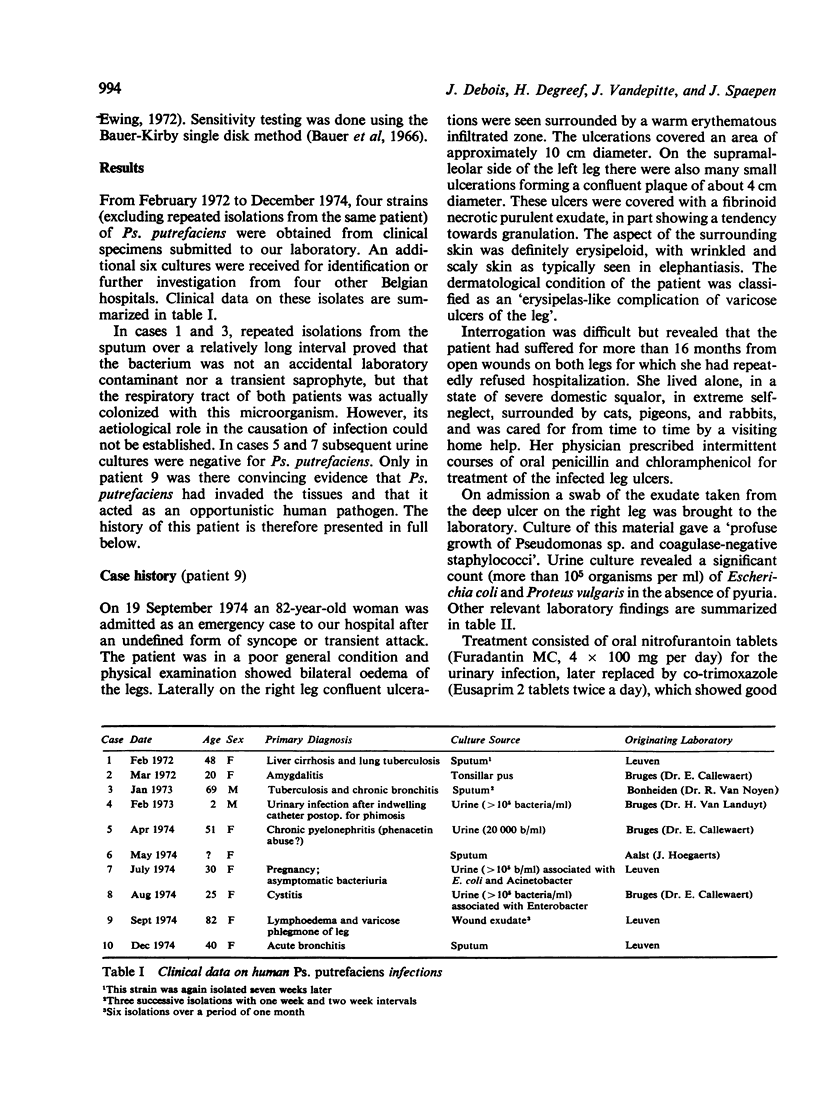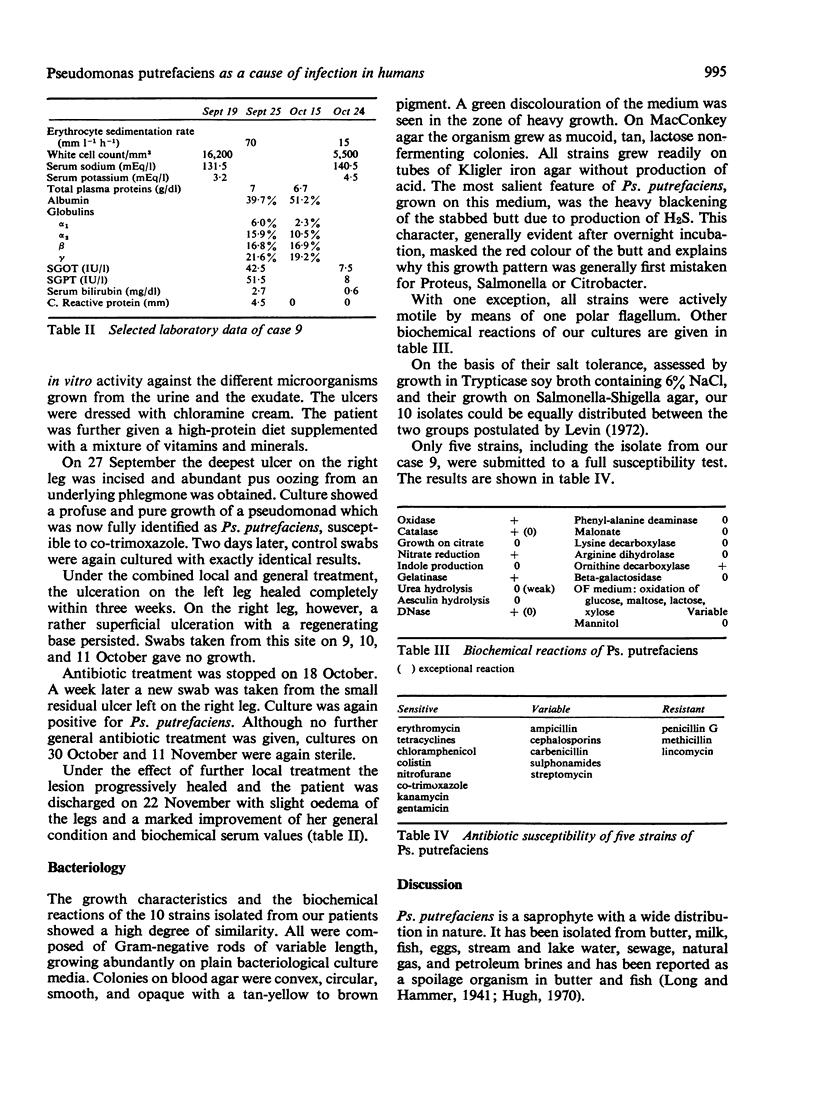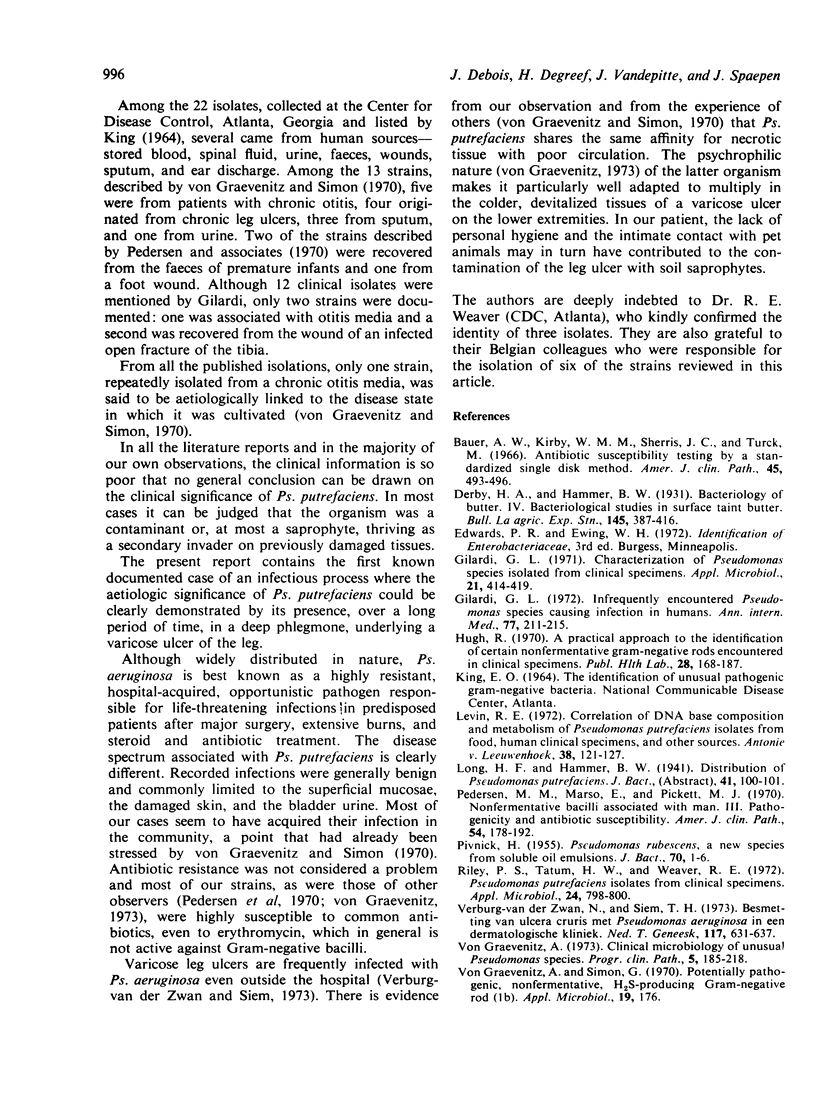Abstract
Pseudomonas putrefaciens, a strongly H2S-producing pseudomonad, was isolated from 10 human infections over a two-year period. In one patient the organism was repeatedly isolated from a phlegmone developing in the depth of a varicose leg ulcer. This is the first report on the occurrence of Ps. putrefaciens in humans outside the USA and the first to provide the detailed account of a clinical observation where the opportunistic pathogenic role of this unfamiliar organism has been sufficiently documented. Data are presented on the bacteriological properties and on the antibiotic sensitivity of Ps. putrefaciens.
Full text
PDF



Selected References
These references are in PubMed. This may not be the complete list of references from this article.
- Bauer A. W., Kirby W. M., Sherris J. C., Turck M. Antibiotic susceptibility testing by a standardized single disk method. Am J Clin Pathol. 1966 Apr;45(4):493–496. [PubMed] [Google Scholar]
- Gilardi G. L. Characterization of Pseudomonas species isolated from clinical specimens. Appl Microbiol. 1971 Mar;21(3):414–419. doi: 10.1128/am.21.3.414-419.1971. [DOI] [PMC free article] [PubMed] [Google Scholar]
- Gilardi G. L. Infrequently encountered Pseudomonas species causing infection in humans. Ann Intern Med. 1972 Aug;77(2):211–215. doi: 10.7326/0003-4819-77-2-211. [DOI] [PubMed] [Google Scholar]
- Levin R. E. Correlation of DNA base composition and metabolism of Pseudomonas putrefaciens isolates from food, human clinical specimens, and other sources. Antonie Van Leeuwenhoek. 1972;38(2):121–127. doi: 10.1007/BF02328083. [DOI] [PubMed] [Google Scholar]
- PIVNICK H. Pseudomonas rubescens, a new species from soluble oil emulsions. J Bacteriol. 1955 Jul;70(1):1–6. doi: 10.1128/jb.70.1.1-6.1955. [DOI] [PMC free article] [PubMed] [Google Scholar]
- Pedersen M. M., Marso E., Pickett M. J. Nonfermentative bacilli associated with man. 3. Pathogenicity and antibiotic susceptibility. Am J Clin Pathol. 1970 Aug;54(2):178–192. doi: 10.1093/ajcp/54.2.178. [DOI] [PubMed] [Google Scholar]
- Riley P. S., Tatum H. W., Weaver R. E. Pseudomonas putrefaciens isolates from clinical specimens. Appl Microbiol. 1972 Nov;24(5):798–800. doi: 10.1128/am.24.5.798-800.1972. [DOI] [PMC free article] [PubMed] [Google Scholar]
- Verburgh-van Zwan N D., Siem T. H. Besmetting van ulcera cruris met Pseudomonas aeruginosa in een dermatologische kliniek. Een onderzoek naar de rol van enkele potentiële besmettingsbronnen. Ned Tijdschr Geneeskd. 1973 Apr 21;117(16):631–637. [PubMed] [Google Scholar]
- von Graevenitz A. Clinical microbiology of unusual Pseudomonas species. Prog Clin Pathol. 1973;5:185–218. [PubMed] [Google Scholar]
- von Graevenitz A., Simon G. Potentially pathogenic, nonfermentative, H2S-producing gram-negative rod (1 b). Appl Microbiol. 1970 Jan;19(1):176–176. doi: 10.1128/am.19.1.176-176.1970. [DOI] [PMC free article] [PubMed] [Google Scholar]


